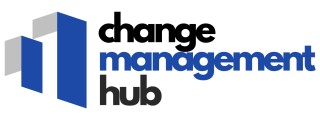
Understanding Compliance Risk in Change Management
Deciphering the Compliance Maze in Change Management
In the ever-evolving landscape of business, change is constant. Organizations often face a myriad of challenges during transitions, and among them, compliance risk stands out as a critical concern. Compliance entails adhering to laws, regulations, and policies that govern operational practices. As businesses undergo change, understanding compliance risk in change management becomes pivotal to ensuring seamless transitions while safeguarding against potential pitfalls.
Compliance risk arises when organizations fail to adhere to regulatory requirements, leading to potential legal, financial, and reputational repercussions. These risks can manifest in various forms, including regulatory compliance challenges, governance issues, and data protection concerns. Consequently, comprehensive risk management strategies are essential to mitigate these risks efficiently.
As organizations navigate change, the specific types of compliance risks they encounter may vary. However, investments in corporate social responsibility, compliance training, and detailed risk assessments are vital in maintaining regulatory compliance. Additionally, it is imperative to establish robust compliance management programs that incorporate governance, risk, and compliance (GRC) principles tailored to the organization's unique needs.
The importance of incorporating effective compliance management processes is underscored by the potential consequences of neglecting regulatory obligations. Organizations must prioritize the development of policies procedures that align with best practices in risk compliance. These practices serve not only to prevent regulatory infractions but also to enhance overall business security and health safety.
Overall, the interchange between compliance risk and organizational change is complex but manageable with diligent strategies. Subsequent sections will explore identifying specific compliance risks during transformations and delve into the critical role of leadership in driving effective compliance initiatives. Moreover, we'll examine case studies that shed light on successful compliance risk management efforts within various sectors.
Identifying Key Compliance Risks During Organizational Change
Pinpointing Crucial Regulatory Concerns
During organizational transformations, identifying key compliance risks is a multi-dimensional challenge. As businesses adapt to new processes, policies, and operational strategies, they must also navigate the intricate web of governance, risk, and compliance (GRC).- Adherence to Regulations: Organizations must ensure compliance with regulatory requirements, which often involve adapting to revised laws and regulations. This requires vigilant monitoring of legal frameworks to prevent discrepancies during change.
- Data Protection: Data security takes center stage during any transition. Compliance risk management here involves safeguarding sensitive information from breaches while adhering to stringent data protection laws.
- Supply Chain Risks: Changes in operational processes may affect supply chain dynamics. This necessitates management compliance initiatives to address potential disruptions and ensure continuity of supply.
- Health and Safety: Transition phases often introduce new operational hazards. Aligning organizational changes with health and safety protocols minimizes risks and fosters a secure work environment.
- Financial Implications: Compliance management must account for the financial impact of change initiatives. Misalignment with financial regulations can have far-reaching repercussions.
- Policy and Process Adjustments: As operational strategies evolve, it's imperative to revise policies and procedures to align with compliance standards. This ensures processes remain effective and within legal stipulations.
Strategies for Mitigating Compliance Risks
Effective Approaches to Mitigating Compliance Risks During Change Initiatives
Change initiatives in any organization can introduce a variety of compliance risks. Successfully managing these risks requires a systematic approach, starting with comprehensive risk assessments that consider potential impacts on regulatory compliance and the business’s overall risk management strategy. Here are several strategies to consider:- Conduct Thorough Risk Assessments: Before implementation, conduct detailed compliance risk assessments to identify vulnerabilities within the organization’s policies, procedures, and processes. This step is vital to understanding the types of compliance risks that might arise and their potential impact on the organization.
- Develop a Robust Compliance Framework: Establish a structured compliance management program tailored to your organization’s specific needs, integrating governance, risk, and compliance (GRC) elements. This framework should align with health and safety regulations, financial laws, and other regulatory requirements to ensure comprehensive coverage.
- Implement Strong Data Protection Measures: Data security is paramount when managing regulatory compliance risks. Employ advanced technologies and data protection tools to secure sensitive data, especially during large-scale organizational changes.
- Enhance Training and Communication: Regular training sessions and clear communication are crucial. Educate employees about regulatory compliance, risk management, and the importance of adhering to policies and procedures during change initiatives. A well-informed team is better equipped to manage risks effectively.
- Establish Clear Policies and Procedures: Clearly outline the policies and procedures related to compliance regulatory measures. This clarity helps mitigate misunderstandings and ensures that all legal, regulatory, and business requirements are met during the process.
- Engage with Legal and Regulatory Experts: Collaborate with legal professionals and regulatory compliance experts to stay abreast of the latest laws regulations. Their expertise can help proactively address compliance risks that might otherwise be overlooked.
- Continuous Monitoring and Reporting: Implement monitoring processes to track compliance risk mitigation efforts and ensure the ongoing effectiveness of your compliance management strategies. Regular reporting will help maintain transparency and accountability within the organization.
The Role of Leadership in Compliance Risk Management
Leadership: The Cornerstone of Compliance Risk Management
The complex landscape of compliance risk management necessitates a robust leadership strategy to effectively guide an organization through regulatory challenges. Strong leadership is instrumental in fostering a culture where compliance is viewed not merely as a legal requirement but as a fundamental business imperative. Effective leaders in this domain embody a deep understanding of various compliance risks associated with organizational change. This understanding allows them to implement policies and processes that address these risks proactively while aligning with broader business goals. Leadership in compliance risk management involves more than just understanding laws and regulations; it requires the ability to effectively communicate these requirements throughout the organization.- Setting a Clear Compliance Vision: Leaders need to articulate a clear vision for compliance, ensuring that the significance of compliance management is embedded in the organization’s core values. This vision encourages all levels of staff to observe and adhere to regulatory requirements diligently.
- Building a Proactive Compliance Culture: Creating a culture that prioritizes compliance starts at the top. Leaders should model ethical behavior and expect the same from their teams, thus preventing compliance risks and establishing a norm of transparency and integrity.
- Facilitating Compliance Training and Development: Providing ongoing training ensures that employees are aware of compliance risks and understand the importance of adhering to regulatory requirements. This training should be tailored to meet the specific needs of different departments, reflecting their unique interactions with compliance management processes.
- Encouraging Open Communication: Leaders should cultivate an environment where employees feel comfortable reporting potential compliance issues without fear of backlash. A clear, open line of communication can help identify risks early and allow for timely risk assessment and intervention.
- Leveraging Technology and Tools: Implementing advanced tools for data analysis and security can streamline compliance processes, reducing the workload on staff and enhancing the overall compliance management program. Leadership should support the adoption and integration of technology to better manage compliance risks.
Tools and Technologies for Effective Compliance Risk Management
Leveraging Technology for Governance, Risk, and Compliance
In the landscape of compliance risk management, the integration of innovative tools and technologies plays a pivotal role in handling regulatory requirements and data protection challenges. Organizations often face a barrage of regulations, making it essential to adopt processes that streamline compliance efforts while ensuring the security of sensitive information. Firstly, advanced compliance management solutions help businesses automate risk assessment and allow for real-time monitoring of compliance risks. Such tools are instrumental in spotting potential non-compliance scenarios early, enabling timely interventions and minimizing operational disruptions. Moreover, financial and business data often require stringent security measures. Implementing software that enhances data protection can safeguard information from breaches, thus aligning the organization's operations with legal and regulatory mandates. When it comes to maintaining updated policies procedures, digital platforms can manage and distribute content effectively, ensuring that all employees are aware of regulatory compliance obligations. By providing continuous training through e-learning modules, organizations can cultivate a culture of compliance awareness and reduce the risk of violations. Finally, integrating a comprehensive governance, risk, and compliance (GRC) management program enables organizations to holistically manage compliance risks across various departments. This approach not only strengthens regulatory compliance but also supports the overall health and safety standards within the organization. As businesses continue to navigate complex regulatory landscapes, investing in the right technology can lead to more effective compliance management, underscoring the importance of robust compliance regulatory measures in organizational processes.Case Studies: Successful Compliance Risk Management in Change Initiatives
Real-World Examples of Compliance Risk Management
Understanding how organizations successfully navigate compliance risks during change initiatives can provide valuable insights. Here, we explore a few case studies that highlight effective strategies and best practices in compliance risk management.
Financial Sector: Strengthening Regulatory Compliance
In the financial sector, regulatory compliance is paramount. One organization faced significant challenges when new laws and regulations were introduced. By implementing a comprehensive risk assessment process, they identified potential compliance risks early. The organization developed robust policies and procedures to address these risks, ensuring alignment with regulatory requirements. Continuous training programs were also established to keep employees informed about compliance management and the importance of adhering to laws and regulations.
Healthcare: Ensuring Data Protection and Security
A healthcare organization undertook a major change initiative to upgrade its data management systems. Recognizing the critical nature of data protection and security, they prioritized compliance with health safety regulations. By integrating advanced technologies and governance risk frameworks, the organization enhanced its compliance management program. Regular audits and risk assessments were conducted to ensure ongoing compliance with data protection laws and regulatory requirements.
Manufacturing: Navigating Supply Chain Compliance
In the manufacturing industry, supply chain compliance is a complex challenge. One company successfully managed compliance risks by adopting a proactive approach. They established clear compliance policies and procedures, focusing on supplier audits and risk compliance checks. By fostering strong relationships with suppliers and providing them with compliance training, the organization ensured adherence to regulatory compliance standards throughout the supply chain.
Technology: Adapting to Rapid Regulatory Changes
A technology company faced the challenge of adapting to rapid regulatory changes in the digital landscape. To manage compliance risks effectively, they implemented a dynamic compliance management system. This system allowed for real-time monitoring of regulatory changes and facilitated quick adjustments to policies and processes. By fostering a culture of compliance and providing continuous training, the organization maintained its competitive edge while ensuring compliance with evolving regulations.
These case studies illustrate the importance of a strategic approach to compliance risk management. By understanding the unique challenges and implementing tailored solutions, organizations can navigate the complexities of compliance risks during change initiatives effectively.













